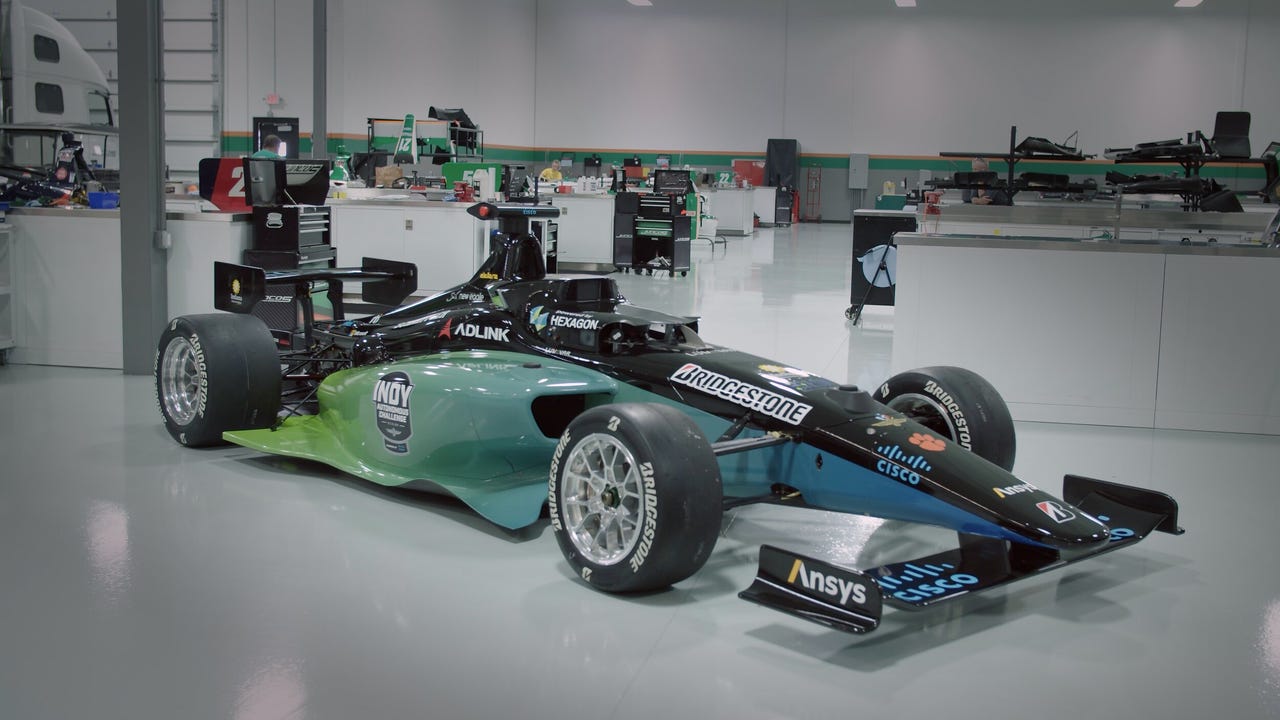































 Indy Autonomous Challenge
Indy Autonomous Challenge No matter which team places first at the upcoming Indy Autonomous Challenge (IAC), the real winner will be the open source architecture powering the cars. The autonomous racing event, which takes place this week, pits nine teams representing 21 universities against each other in high-stakes racing for a$1 million prize purse.
"To our knowledge, all of the vehicles in the IAC are running ROS 2 and Autoware as the basis of their autonomy stack," says Katherine Scott, Developer Advocate at Open Robotics, which oversees the Robotic Operating System (ROS), an open source architecture for robotics development. Autoware is the first all-in-one open source software for self-driving cars.
Organized by Energy Systems Network and the Indianapolis Motor Speedway, the primary goal of the IAC is to advance technology that can speed the commercialization of fully autonomous vehicles and deployments of advanced driver-assistance systems (ADAS). Much like racing development often leads to innovations adapted for the street, the high speeds and incredible handling challenges of racing are ideal proving grounds for autonomous mobility. Indianapolis-based Lilly Endowment Inc., one of the world's largest philanthropic foundations, provided a grant to help Energy Systems Network develop the IAC and fund the$1 million IAC prize purse.
But the unsung hero of the event is the open source architecture that's made it possible, in relatively short order, for teams of university students to develop autonomous controls paradigms for performance race cars.
"What we're really excited about in the IAC -- more so than just the high-speed vehicle autonomy -- is the prospect of having an entire generation of engineers learning and using ROS," says Scott. "Advanced technology doesn't happen in a vacuum; students need a common language and set of tools to work together efficiently. When done right, open-source technology is accretive, and the advances in this year's competition will likely make it into subsequent competitions and perhaps production vehicles."
The car used for the event, which is an incredible feat of racing engineering, is the Dallara-produced AV-21 that has been retrofitted with hardware and controls to enable automation. Since 2001, Dallara has been the sole supplier of the Indy Lights series.
The performance race cars are equipped with custom sensing packages. Thanks to ROS and Autoware, the development process has focused on higher-level controls work.
"The combination of ROS 2 and Autoware have given the IAC student teams a firm starting point for building out vehicle autonomy. Rather than having to focus on building interfaces to the sensors and actuators of the vehicles, the students can focus on the more challenging control and planning tasks. For example, instead of spending their time building an interface to the vehicle's LIDAR, the students can instead focus on using data from that LIDAR to keep the vehicle in its lane and avoid obstacles."
The competition takes place on October 23 and is open to fans via a registration page.
 Hot Tags :
Innovation
Robotics
Hot Tags :
Innovation
Robotics